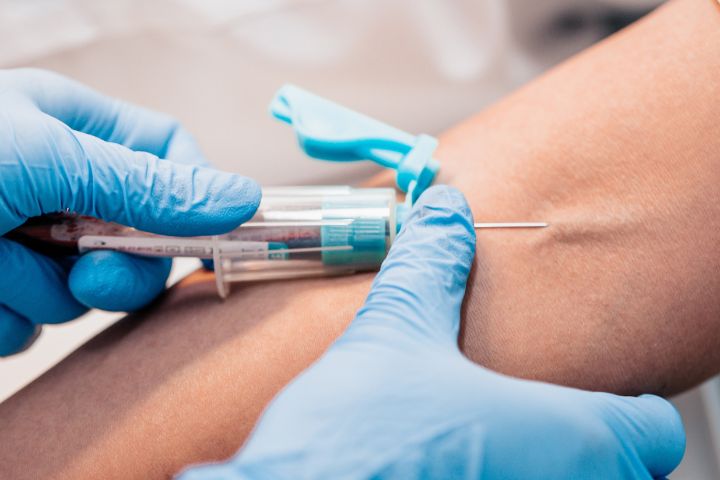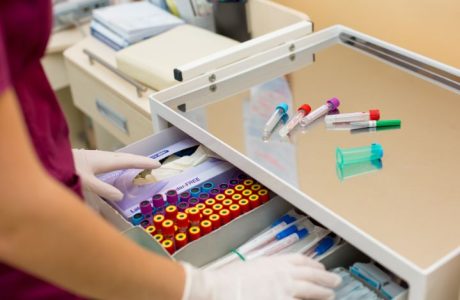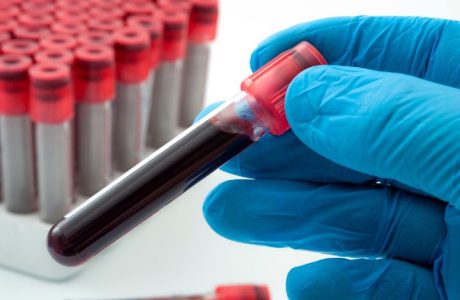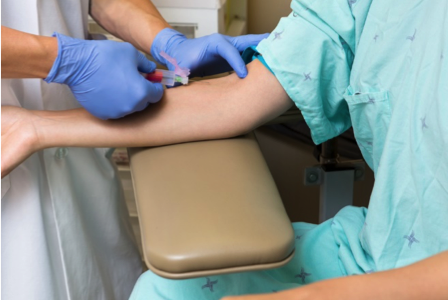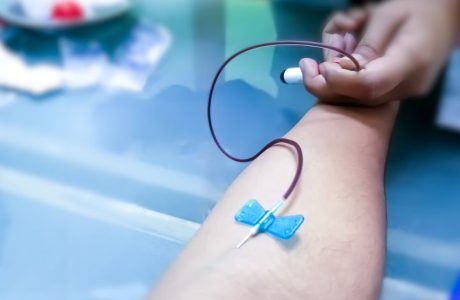A good phlebotomist training program can be your key to finding a career in this exciting sector of healthcare. It is designed to prepare you for the fast-paced nature of the job and for working with people to draw blood and other samples. If you’re interested in becoming a phlebotomist in 2024 and beyond, your timing is ideal! US officials estimate that phlebotomy jobs are growing faster than the average for other careers. With expected job growth of a projected 8% from 2022 through 2032, now is a great time to enroll in a phlebotomy training program1.
But it’s important to do your research before you begin so you know what a phlebotomy training program can prepare you for. To start, you should make sure the work is a good fit for you. For example, if the sight of blood makes you woozy, a phlebotomy career might not be right for you! Phlebotomists spend most of their workday drawing blood or other samples. They do this through processes like:
- Venipuncture (inserting a needle into a vein)
- Finger sticks
- Heel sticks (usually used for babies)
Phlebotomists are also responsible for careful labeling and storage of blood, urine, and other samples. They also help with transporting the samples where they need to go for testing and more. As you can see, it’s safe to say you’ll spend a lot of time around bodily fluids! If that’s okay with you, then read on.
A few other important skills you’ll need to become a phlebotomist:
- Interpersonal skills
- Communication
- Organization
- Record keeping
If you don’t have all these skills yet, that’s okay. A good phlebotomy training program can teach you much more than how to draw blood. It should also set you up for success in these other areas.
Find out more about Training Direct’s Phlebotomy program today!
A phlebotomy training program can give you the skills needed!
Selecting the right phlebotomy training program is very important. That’s because in the training, you can learn important skills you’ll use every day as a phlebotomist. Drawing blood is not an easy task, and there are a lot of moving parts. Your coursework should help you learn everything you need for success, including:
- Medical terminology
- Venipuncture techniques for drawing blood
- How to properly store, transport, and analyze blood samples
- Emergency procedures for when people faint or have adverse reactions to a blood draw
- Infection control and sanitation measures
- Patient communication skills
Each knowledge area is crucial for you to understand for the safety and comfort of your patients. Be sure any phlebotomy training programs that you research cover these topics.
It’s also important to learn good “bedside manners” when communicating with patients. Phlebotomists spend a lot of time around nervous people. In fact, people of all ages get nervous about a blood draw. As a phlebotomist, your job is not only to draw the patient’s blood, but to make them feel as comfortable and safe as possible through the process. Showing compassion and kindness is just as important a skill as knowing how to draw blood.
Get your certification after completing your training
Once you’ve finished your program, you can earn your phlebotomy certification. There are a few different certification options out there. Consider what certifications you might need as you work your way through your phlebotomy training program.
The Certified Phlebotomy Technician (CPT) is a popular one. It shows potential employers that you understand the basics of phlebotomy techniques and safety. A variety of credentialed organizations offer the certification. If you sit for the CPT, you’ll prove your ability to draw blood. You’ll also show your skills in patient communication, specimen preparation, and more.
Other people choose to sit for the Registered Phlebotomy Technician (RPT) exam. Offered by the American Medical Technologists, this certification is more difficult. It shows a higher level of competency in phlebotomy topics.
Another certification you can earn is a Certified Venipuncture Specialist (CVS). This certification focuses on venipuncture or drawing blood from a vein. This option is for people who want to focus their career on venipuncture procedures.
Which certification path should you pursue after your phlebotomy training program? Take some time to write down where you see yourself in your career in 1, 5, and 10 years. Think about potential employers you’d like to work for. You should also consider your family goals, as well as the time you’ll have to dedicate to your program or career. From there, narrow down what specializations or certifications you need to have. Once you have this list, you can start to plan out your phlebotomy career pathway!
Where you can work after you complete your certification
According to the Bureau of Labor Statistics, the most popular place for phlebotomists to work is a hospital or a medical/diagnostic laboratory. 2 But hospitals and labs are not the only place you can look for work after your phlebotomy training program. Other places you might work as a certified phlebotomist include:
- Blood donation centers
- Nursing homes
- Doctor’s offices
- Ambulances or other ambulatory healthcare services
- Outpatient care centers
- Mobile blood drives
Consider your career goals again. If you enjoy a change of pace in your daily routine, a mobile blood drive or ambulance service might be a good fit. If you enjoy the testing and scientific processes, a laboratory might be a better fit. You know yourself best, so take your interests into consideration. This will help you find the best work set-up after your phlebotomy training program.
Pursue phlebotomy training with Training Direct
A career in phlebotomy can be rewarding and challenging. Training Direct offers an exciting phlebotomy training program for people in Connecticut. With campuses in Danbury and Bridgeport, students who choose Training Direct can:
- Learn the key skills necessary for success in the field of phlebotomy
- Gain the knowledge needed to prepare for phlebotomy certification
- Perform live venipuncture and capillary collections on classmates as part of their phlebotomy training program
- Take advantage of Training Direct career services assistance after graduation
To learn more about Training Direct’s phlebotomy training program in Connecticut, click the button below.
Training Direct encourages all graduates to pursue applicable certification, however, Training Direct makes no promises of a student’s or graduate’s outcome on a certification exam or their ability to gain recognition from a professional registry. Additional fees and requirements may apply in order to pursue certification and are the responsibility of the student.
Career services assistance is available to all program completers; however, job placement is not guaranteed by Training Direct.

